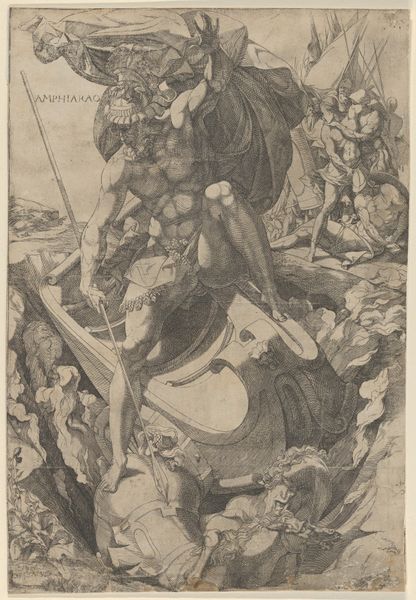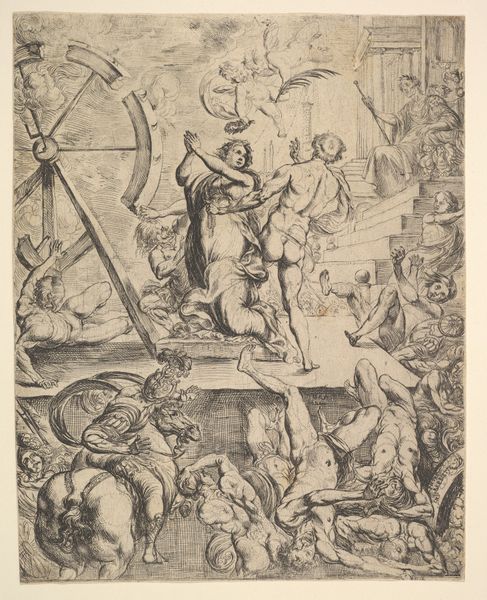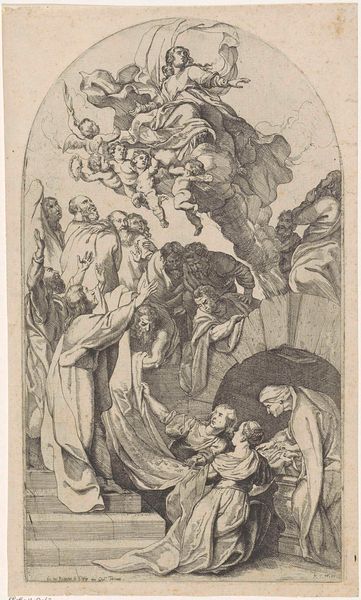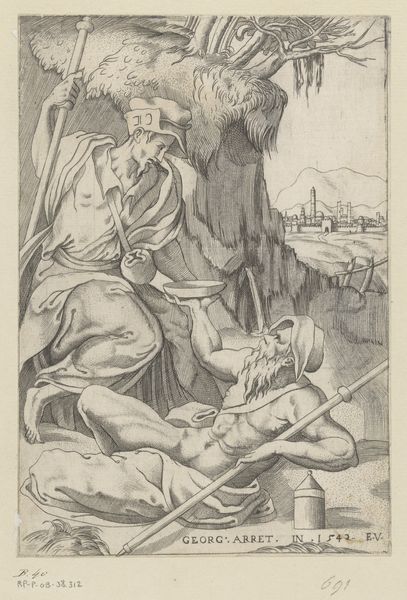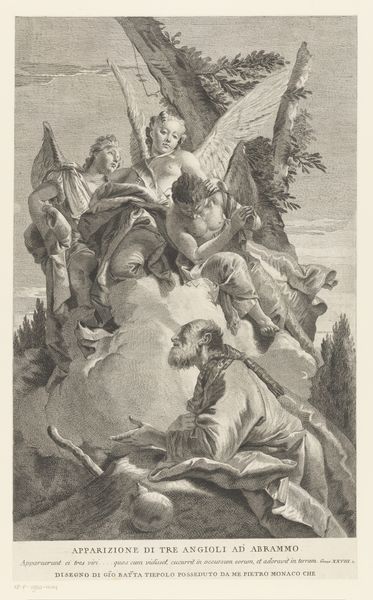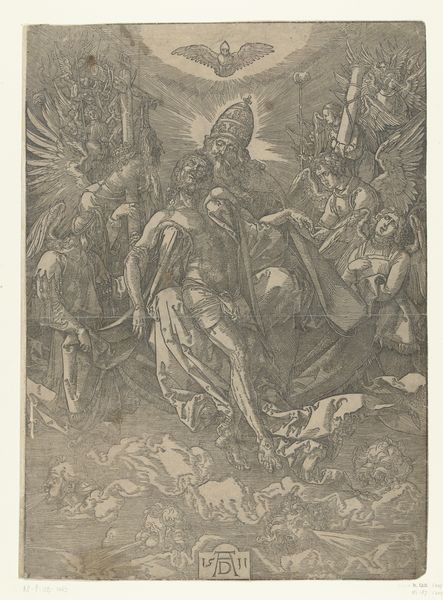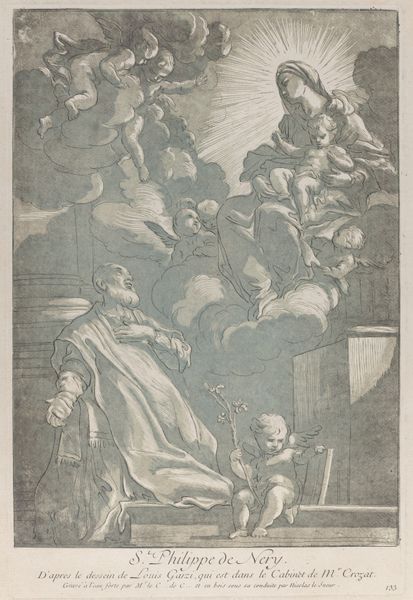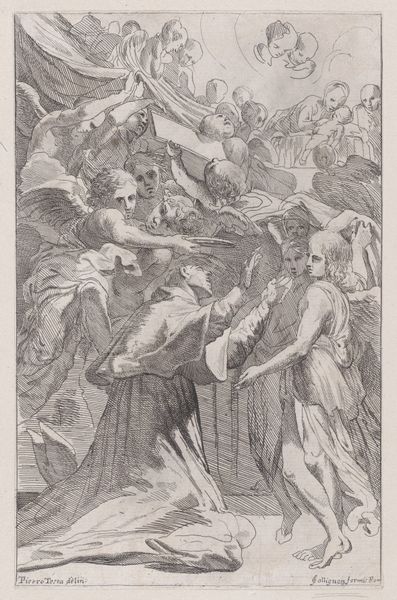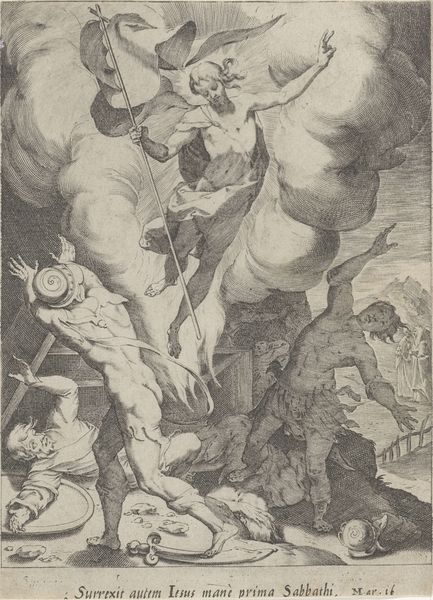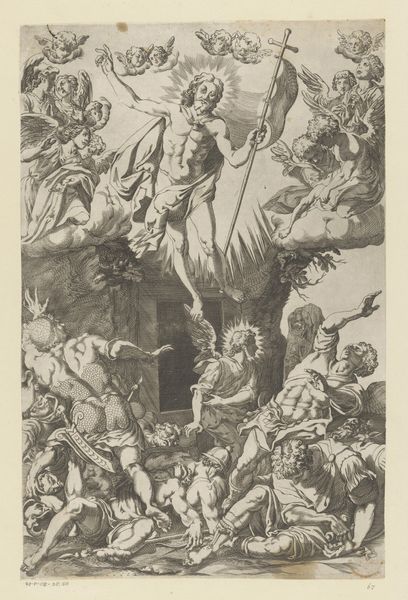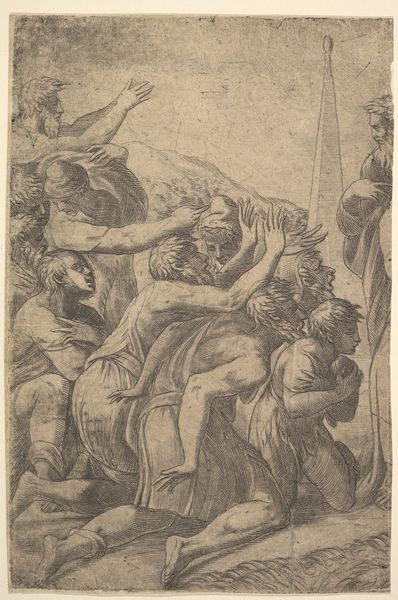
print, etching
# print
#
etching
#
mannerism
#
figuration
#
history-painting
#
italian-renaissance
Dimensions: sheet (trimmed to plate mark): 21 x 13.6 cm (8 1/4 x 5 3/8 in.)
Copyright: National Gallery of Art: CC0 1.0
Editor: This etching, "The Resurrection of Christ" by Parmigianino, dates from around 1528-1529. The composition is striking, with the figure of Christ emerging from what appears to be a tomb while soldiers look on in various states of alarm. What elements of its design stand out to you? Curator: Primarily, the artist's skillful manipulation of line. Observe the density and direction; these hatchmarks and strokes create a sense of dynamic movement, spiraling from the radiant figure of Christ downwards to the confused mass of soldiers. Consider also the use of negative space. The relatively blank area surrounding Christ isolates Him, accentuating His ethereal form. Editor: I hadn’t thought of the negative space as being such an important part of it. Is the contrast essential to interpreting the image? Curator: Indeed. Semiotically, the contrast functions as a binary opposition, life versus death, divine versus earthly. This interplay isn't simply representational, but structural, driving the very composition. Notice how the figures’ musculature is described. How do you read this stylistically? Editor: It's quite exaggerated and elongated. Mannerist, I presume? Curator: Precisely. This distortion defies a strict Renaissance naturalism, opting instead for an artificial grace that reinforces the unnatural, miraculous event depicted. Would you agree that the technique supports its spiritual implications? Editor: Absolutely. Seeing how the style contributes to the narrative in that way, beyond just depicting the story, is insightful. Thanks! Curator: It demonstrates how form itself carries meaning. Thank you, a stimulating engagement.
Comments
No comments
Be the first to comment and join the conversation on the ultimate creative platform.


